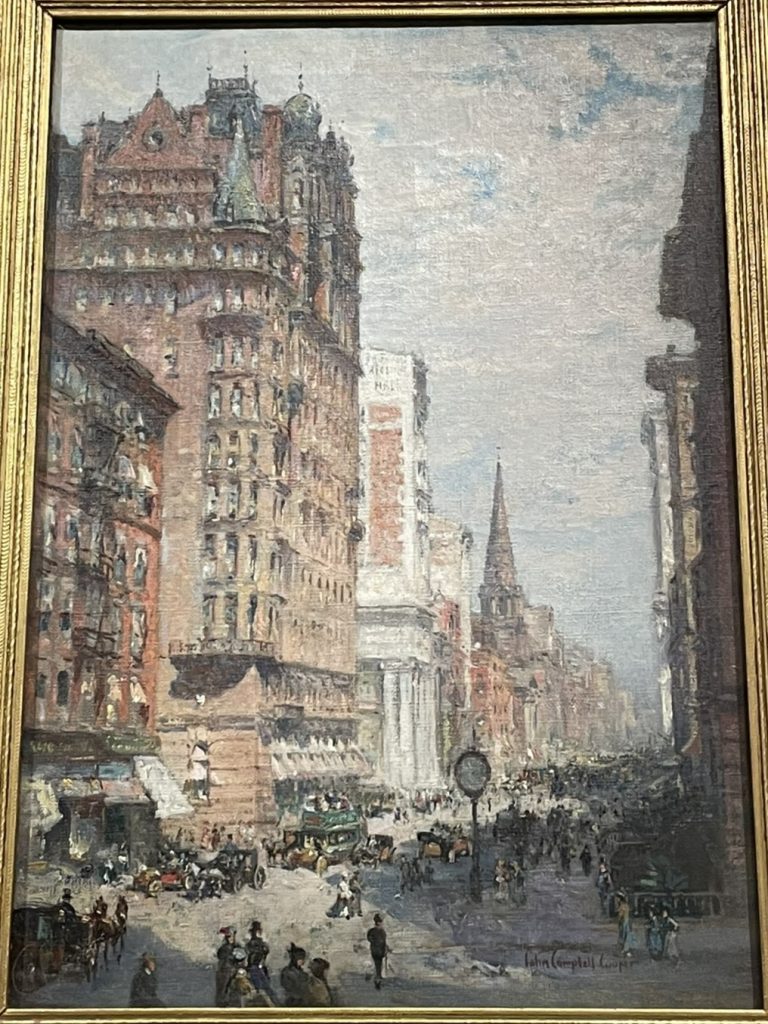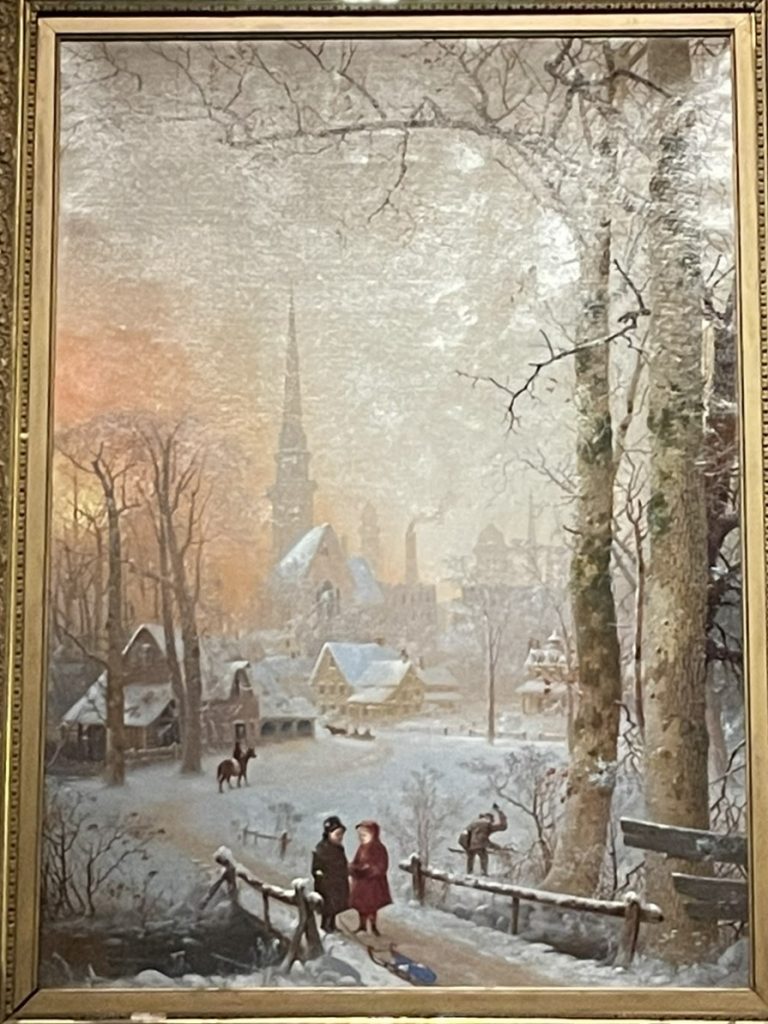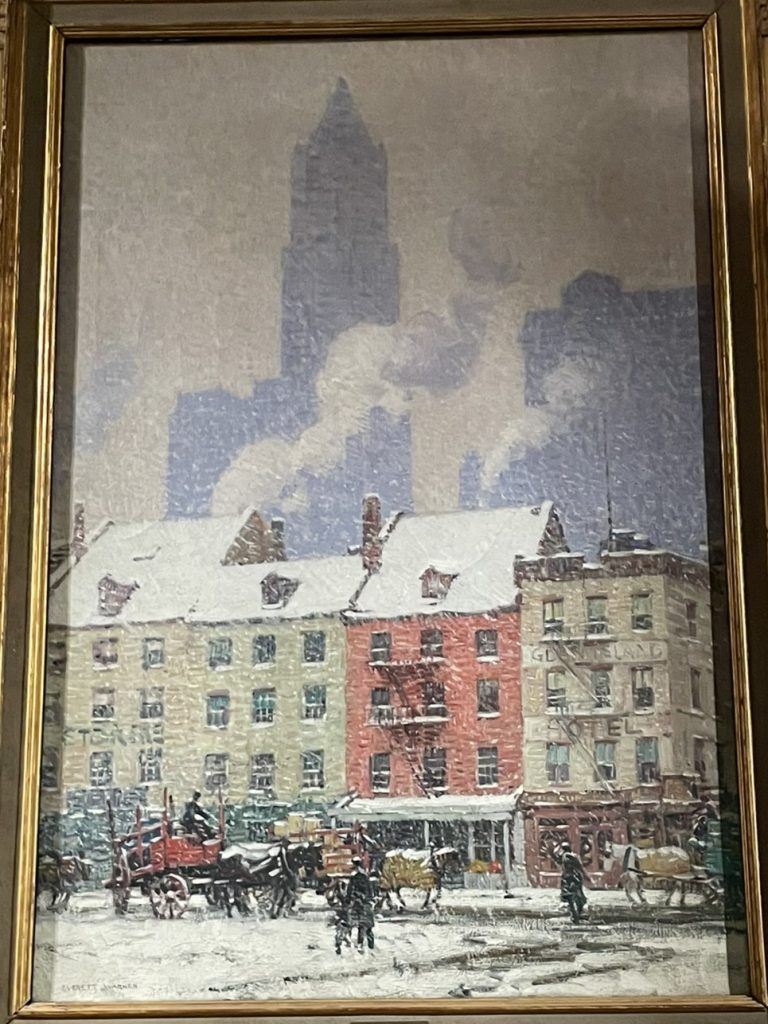Our 18th state capitol tour is in the books with a visit to the New York State Capitol in Albany, New York.
New York State took its time deciding where its capital was going to be, but eventually settled on Albany in 1797. Prior to that, the location bounced between Albany, Kingston, Poughkeepsie, and the city of New York. However, it took 90 years before they started work on the current building, which was underway starting in 1867.
The building was completed after 32 years of work in 1899, and cost a whopping $25 million dollars (almost $1 billion today – hot damn!). The exorbitant cost led to many delays in and turnover of architects. It also led to various architectural styles being incorporated, starting with the Romanesque on the ground floor, moving on to Renaissance Classical for the second and third floors, and finishing up the top two floors in the Romanesque again.
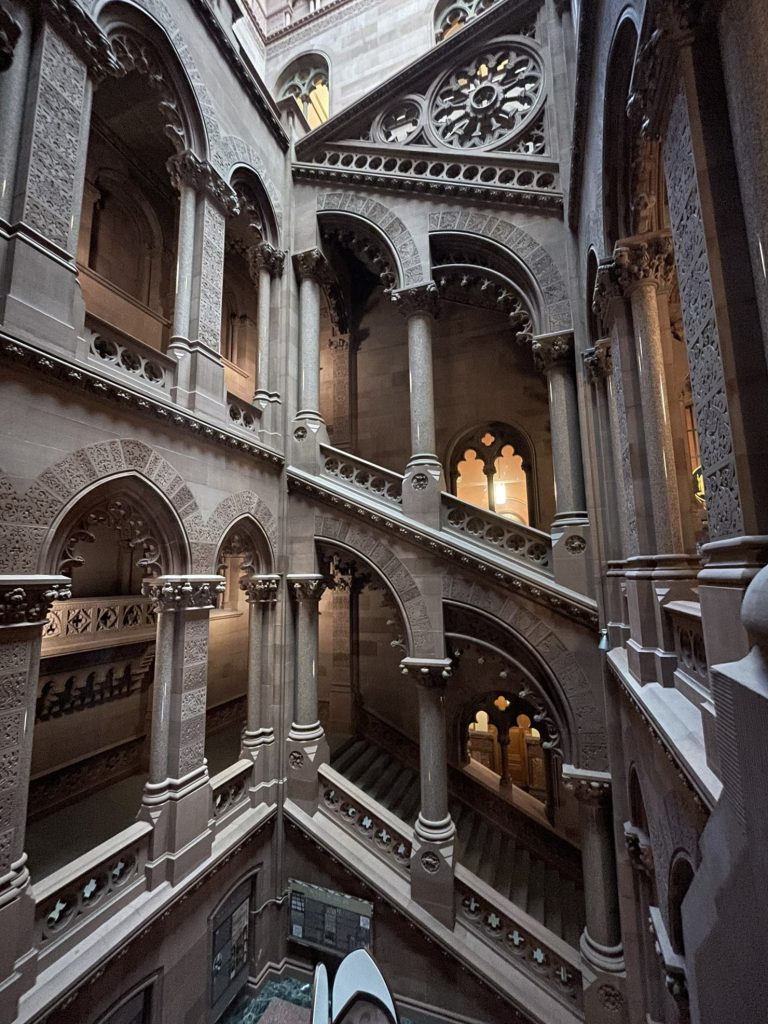
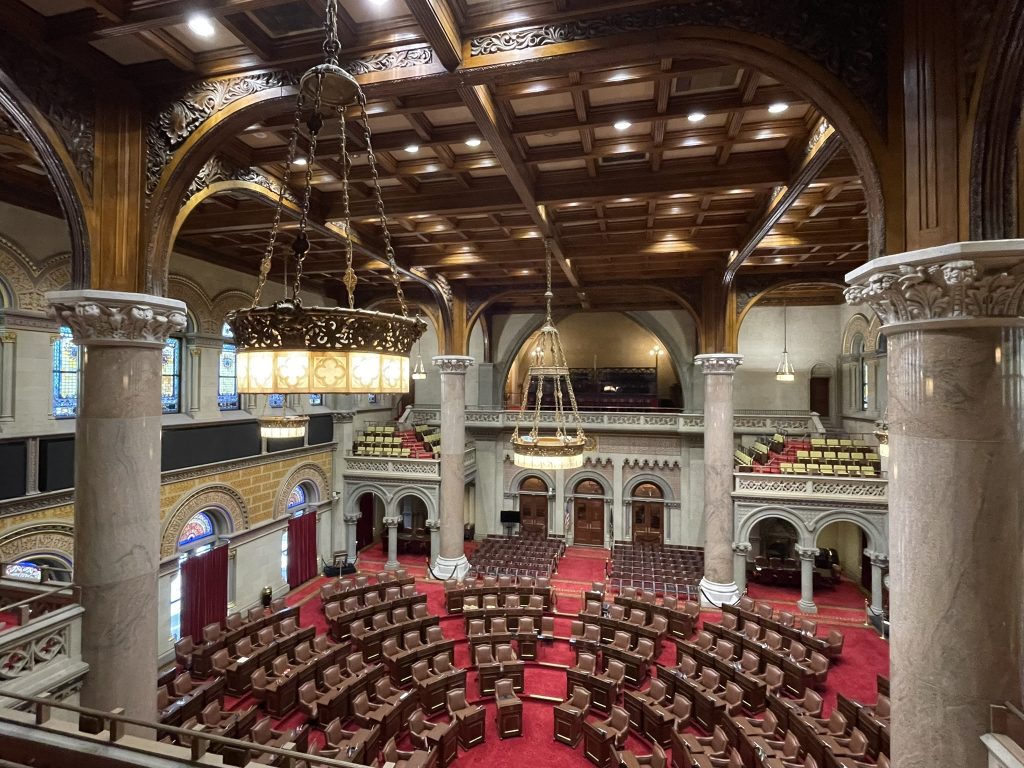
The building has a central open courtyard, and is 220 feet tall at its highest point. It is notably missing a domed roof, one of 11 state capitols to go that route.
The initial plans called for one, but the building’s weight was causing problems. Not only were stress fractures appearing soon after the building was completed, the entire building started shifting downhill, which was stopped by adding a 166-foot staircase to the eastern facade (see cover photo)!
But the real question is, how does it fit in our overall ranking of state capitols? Doug was impressed by the scale of the building, but also found it dark and uninviting. He didn’t appreciate the pastiche of architectural styles that went into the building, despite the wonderful craftsmanship of the stonemasonry. Here’s how the state stacks up so far.
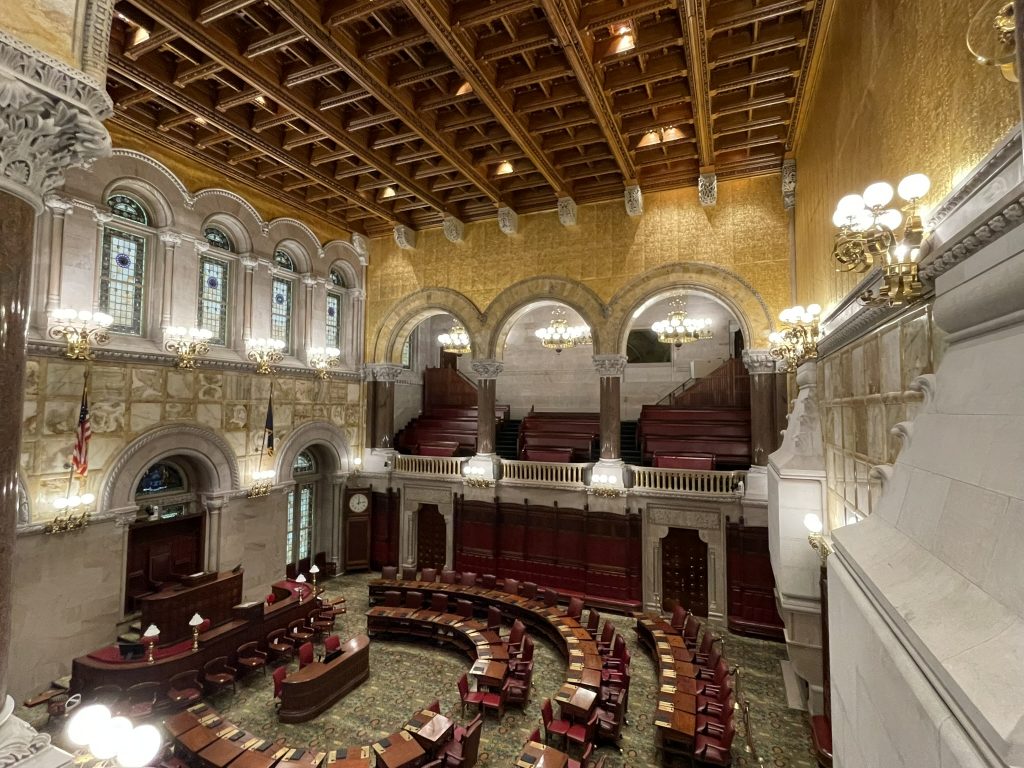
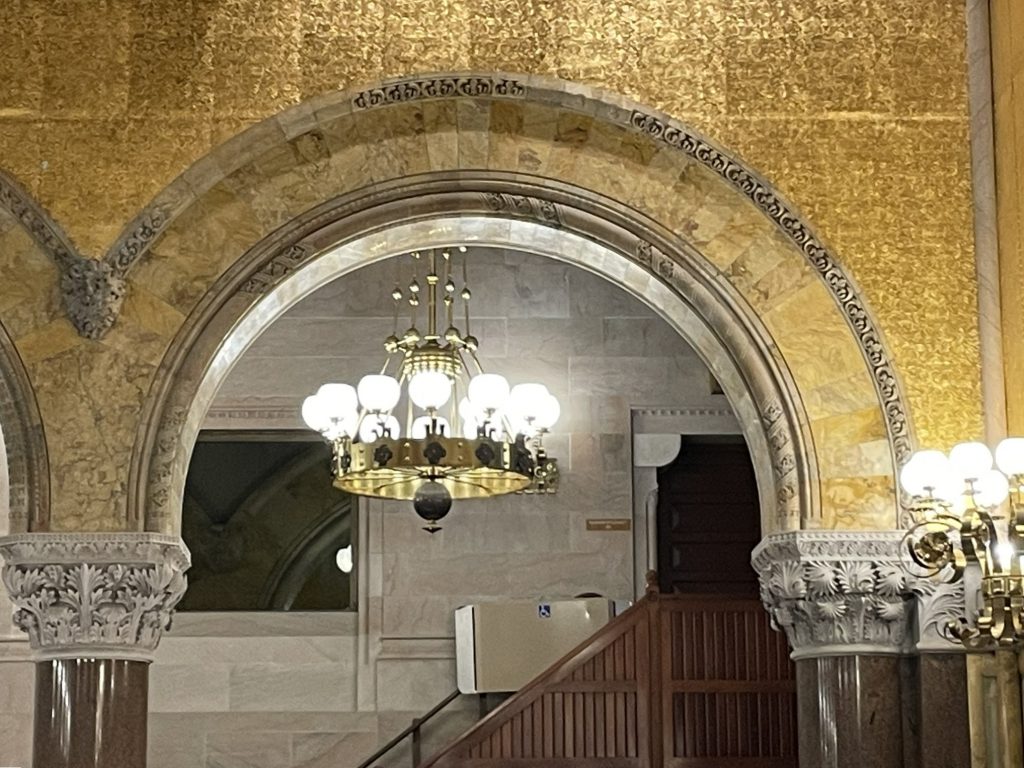
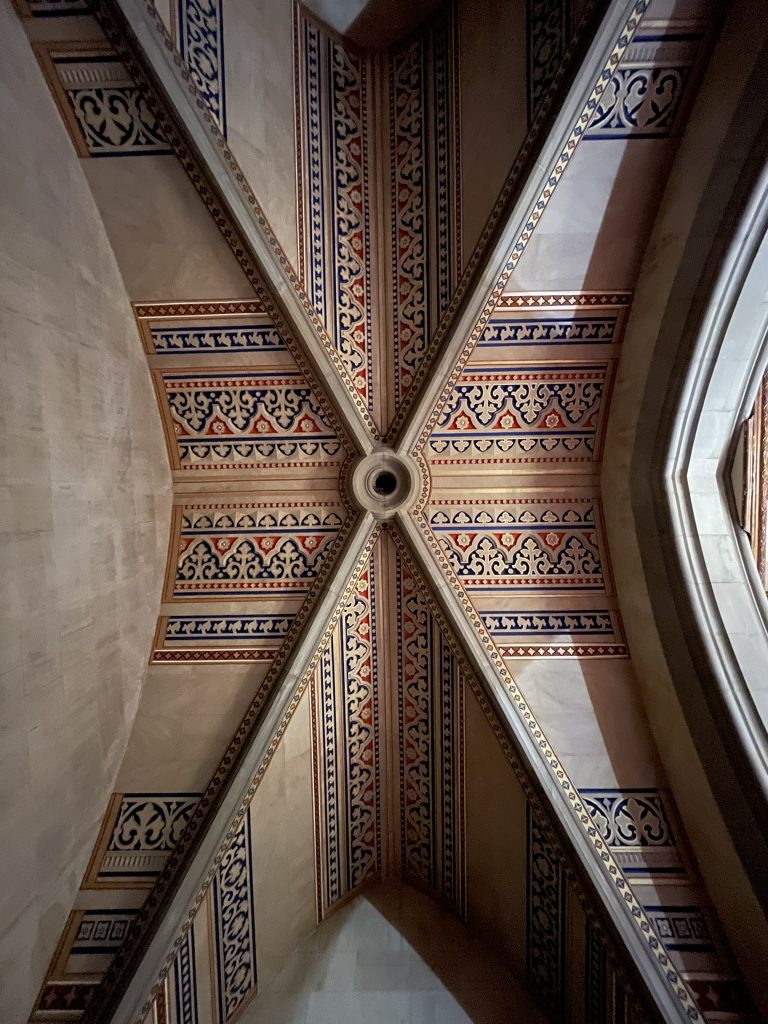
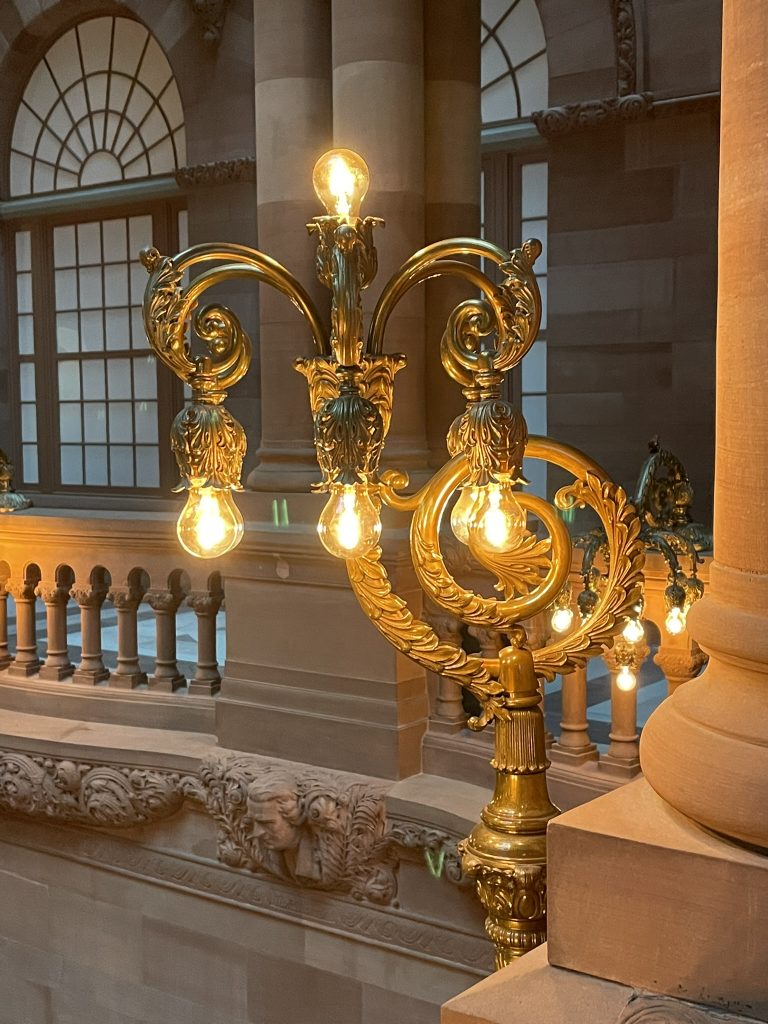
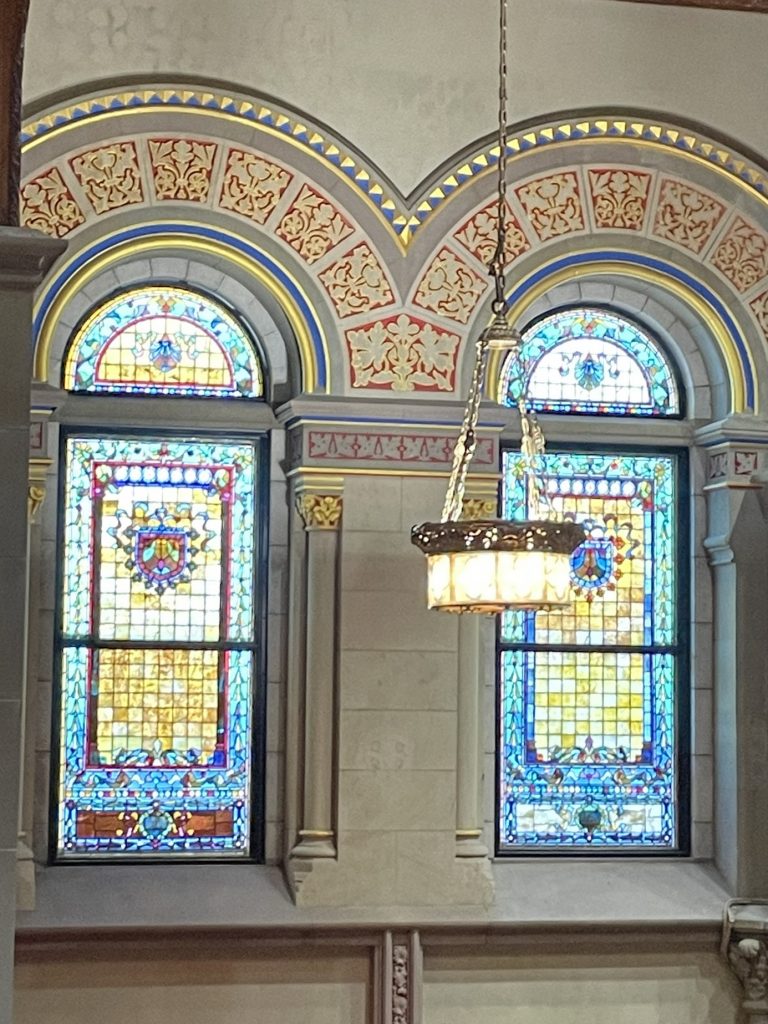
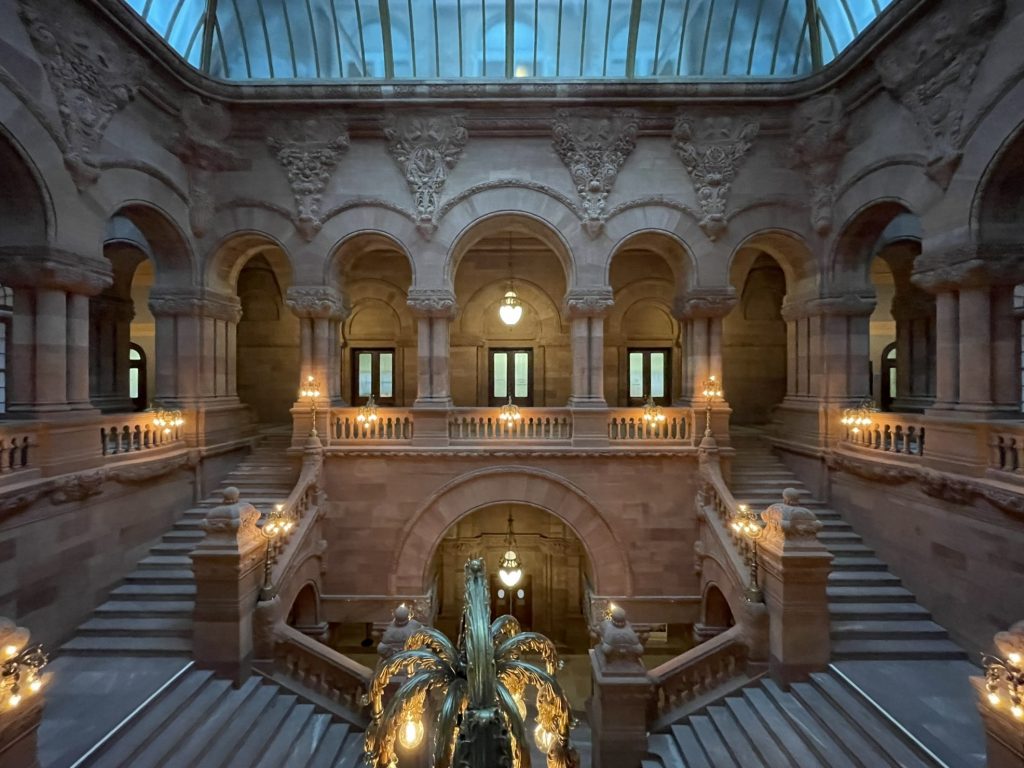
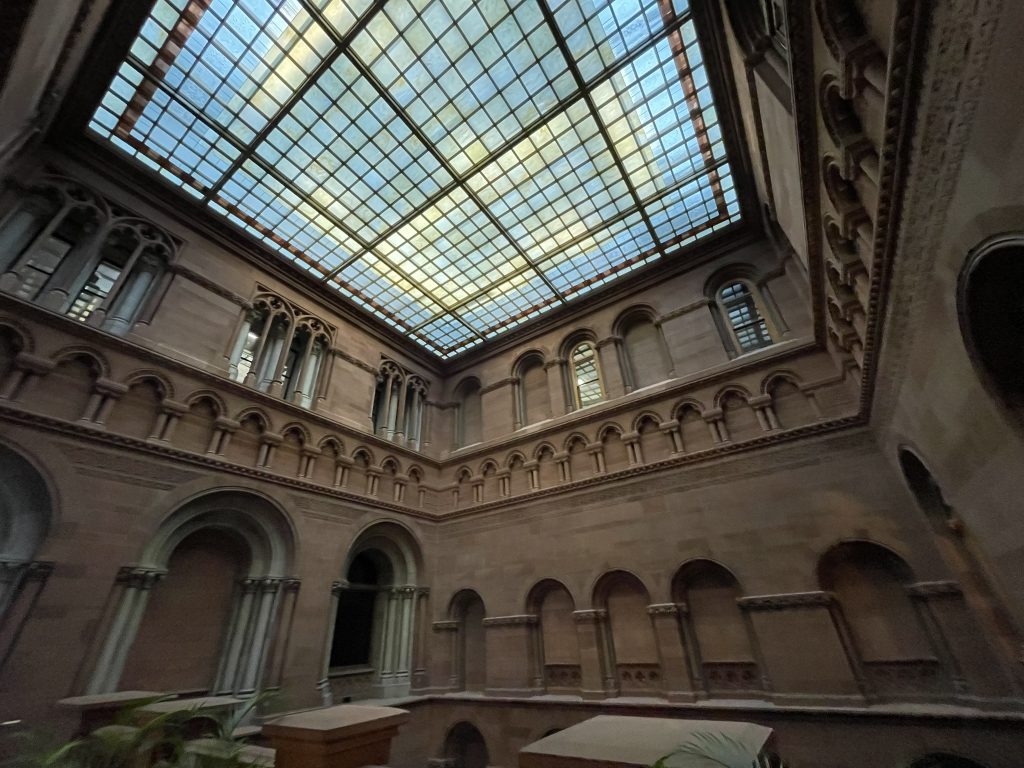
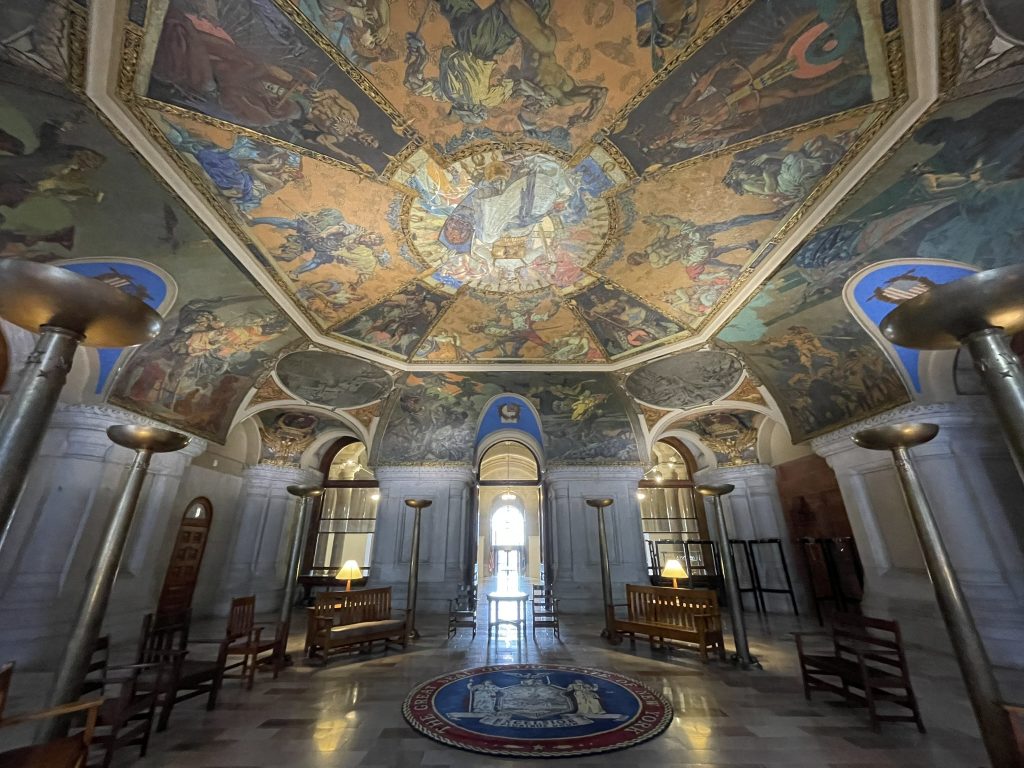
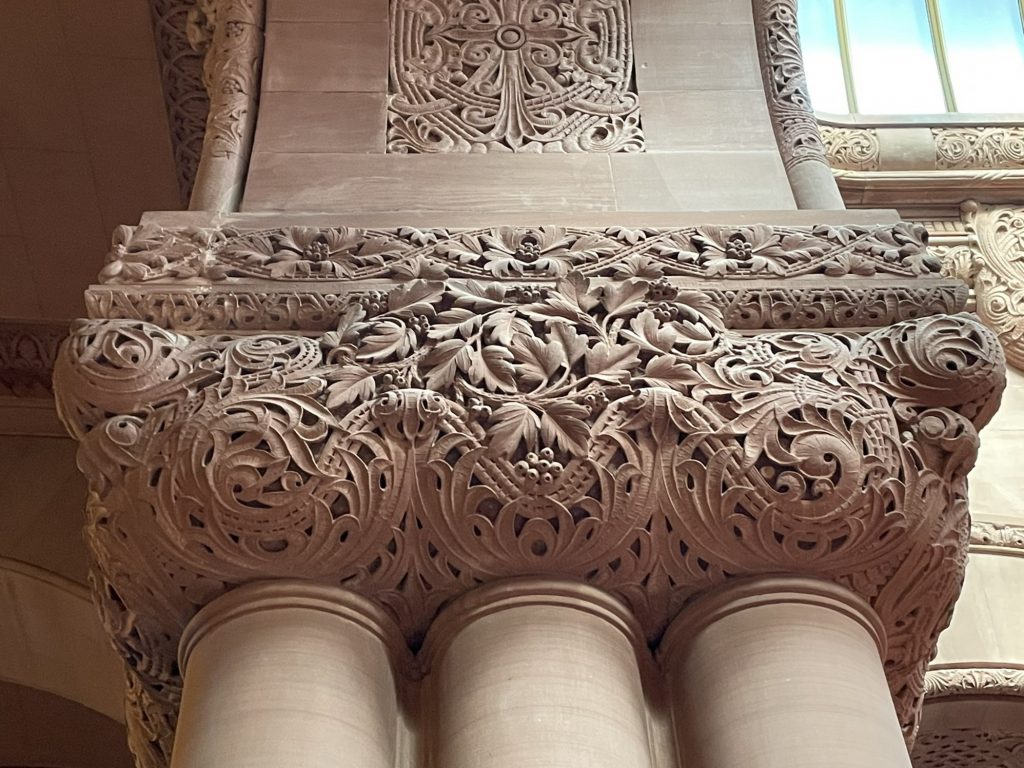
Hall of New York
The “Hall of New York” (which was actually spread over a few hallways) featured paintings of scenes around the state.
